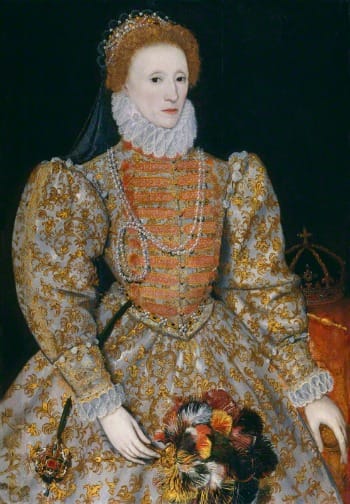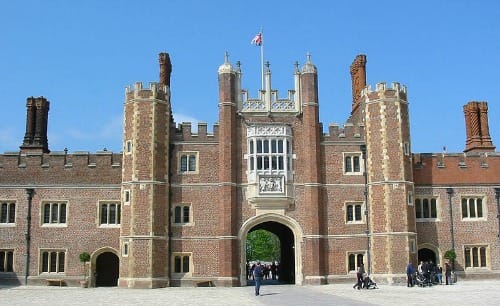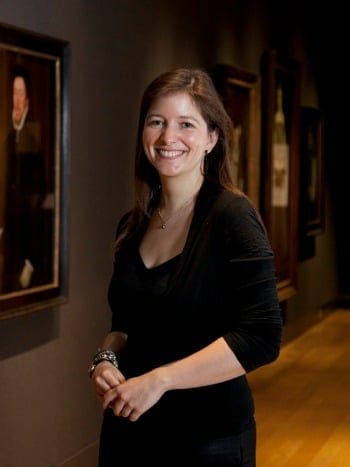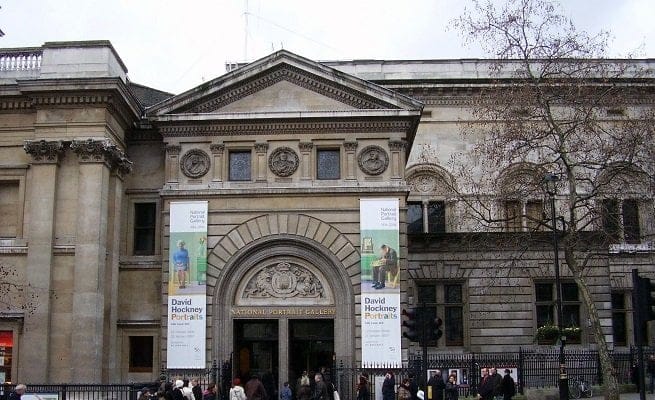Welcome dear London Perfect readers to the first in a small series of blogposts on the magnificent Tudor Kings and Queens of England (Henry VIII and Elizabeth I are probably the most famous of that particular set of royals if you’re wondering). We’re lucky to have bagged an interview to kick things off, so let me introduce you to Dr. Charlotte Bolland, Ph.D. That’s a Ph.D in the History of Art, specifically arty things to do with the monarchs of the Tudor Dynasty.
Which makes it marvelous that she’s working at the National Portrait Gallery on many beautiful arty things produced during the period from 1485 to 1603 when these kings and queens reigned. This is such a fascinating time; religious turmoil (the Reformation), international crises (the Armada) and a cultural Renaissance that continues to define Britain today (William Shakespeare, anyone?).
And what about those royals? The glamour, the glitz, the gossip! But for that I’ll leave you in the capable hands of Dr. Bolland…
What is it about the Tudor dynasty that is so captivating, centuries on from the death of Elizabeth I in 1603?
Despite the passage of time it seems that people still have a real feeling of familiarity with the Tudors. This might come from studying the period at school or afterwards, but also through novels and film dramatizations of their lives. They were such vivid figures, for example Henry VIII and his six wives, or Elizabeth ‘the Virgin queen’, that people engage with the portraits on a different level.
Which are your three favourite Tudor portraits in the NPG and why?
It’s always difficult to choose, but my favourite work in the collection is probably a very unusual portrait of Edward VI, which is elongated into an anamorphic distortion – it only resolves itself into a normal portrait when you look at it from the correct angle and distance. It was probably painted as a gift from the artist when Edward was prince, and it’s a wonderful example of artistry being used to captivate the attention of a young boy.

King Edward VI by William Scrots, oil on panel, anamorphosis, 1546, 16 3/4 in. x 63 in. (425 mm x 1600 mm) © National Portrait Gallery, London
Perhaps the finest portrait in the Gallery’s Tudor collection is Anthonis Mor’s depiction of Sir Henry Lee. Mor was one of the best portraitists working in Europe at the time and he painted many members of the Hapsburg court, including Philip II of Spain, one of the most powerful men in Europe. The likeness has a wonderful sense of character and the subtle shading creates a real sense of depth.

Sir Henry Lee by Anthonis Mor (Antonio Moro), oil on panel, 1568, 25 1/4 in. x 21 in. (641 mm x 533 mm) © National Portrait Gallery, London
Finally, of all the portraits of Elizabeth I, I think my favourite is the so-called ‘Darnley’ portrait, which is named after one of its previous owners. This depiction of the queen appears to have been used as a source for many other painted portraits during the period and so must have been praised at the time as well. When you look at the painting very closely it is possible to see the way the artist has skillfully manipulated the paint to create a variety of textures; for example, in the pearl necklace, the jeweled pendant and the amazing feathered fan.

Queen Elizabeth I by Unknown Netherlandish artist, oil on panel, circa 1575, 44 1/2 in. x 31 in. (1130 mm x 787 mm) © National Portrait Gallery, London
Codpieces or Ruffs? Which one is most in need of a sartorial revival and why?
Definitely ruffs – and as it’s only a small step from the recently revived ‘Peter Pan’ collar to a discrete little ruff I think it could be on its way! The portraits from the sixteenth and seventeenth century show the wide range of possibilities that are available for both men and women so it could be a very long-running trend…
You’ve a free weekend in London. How best to spend it?
I’m a great fan of the Southbank – in the summer sunshine there’s always lots going on, particularly around the National Theatre, and if it should dare to rain there is something to suit every taste if you need to seek shelter, from Tate Modern opposite St Paul’s Cathedral to the London Aquarium opposite Westminster. Another great way to see the Thames is to jump on a boat – there are ferries that run the full-length of the river in the city, either heading west to Hampton Court or east to Greenwich and the Thames Barrier.

Enjoy a boat ride down the Thames to see one of the greatest Tudor Palaces still in existence. Ladies and Gentlemen, I give you Hampton Court.
Many thanks to Charlotte!
If this interview has whetted your appetite for more Tudor art then you’d best get prepared for the NPG’s exhibition of Elizabeth I & Her People (October 10 2013 – January 5 2014). Oh, and we’ll be having a small series of Tudor-themed posts right here on the London Perfect Blog. Watch this space…
_____________
Zoë F. Willis is a writer and enthusiastic London resident. You can read more about her adventures and creative exploits at https://thingswotihavemade.blogspot.co.uk/
Image credits: Thank you to the National Portrait Gallery for kind permission to reproduce the works of art in this blog post. Hampton Court Palace by Man Vyi,





[…] welcome to Part Two of our Tudor-themed series of blog posts. I hope you enjoyed our interview with Dr. Charlotte Bolland of the National Portrait Gallery that started everything off. Let’s now have a chat about one of the most impressive architectural […]
[…] we’re running at the moment (Fancy a trip to Hampton Court? How about Tudor Portraits at the National Portrait Gallery?). But to focus purely on the Tower of London’s Tudor period – a mere 117 years out of its […]